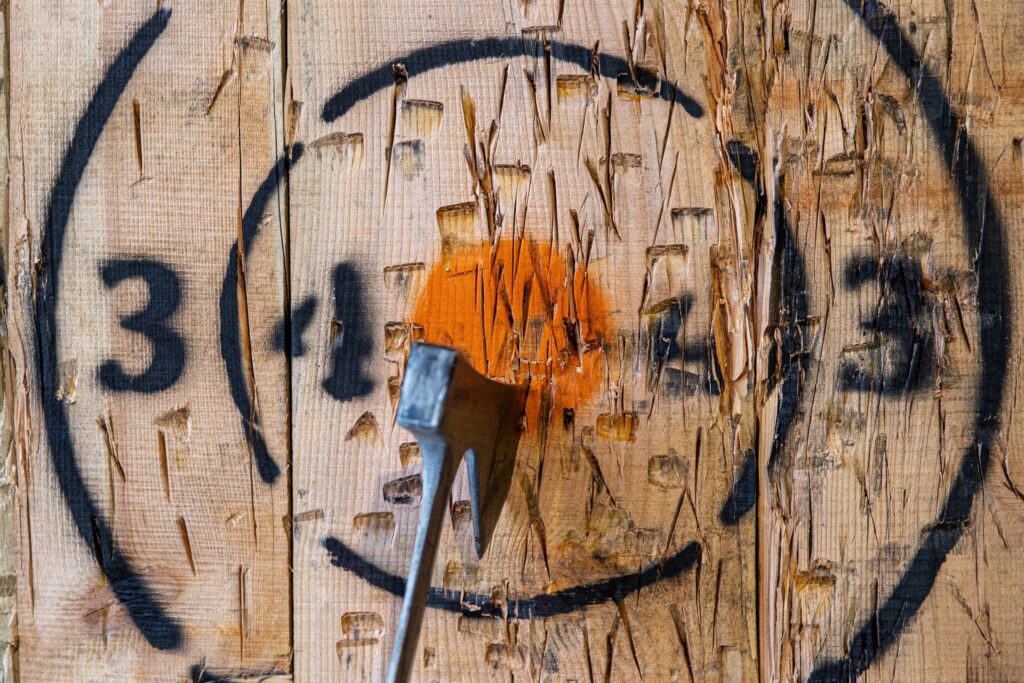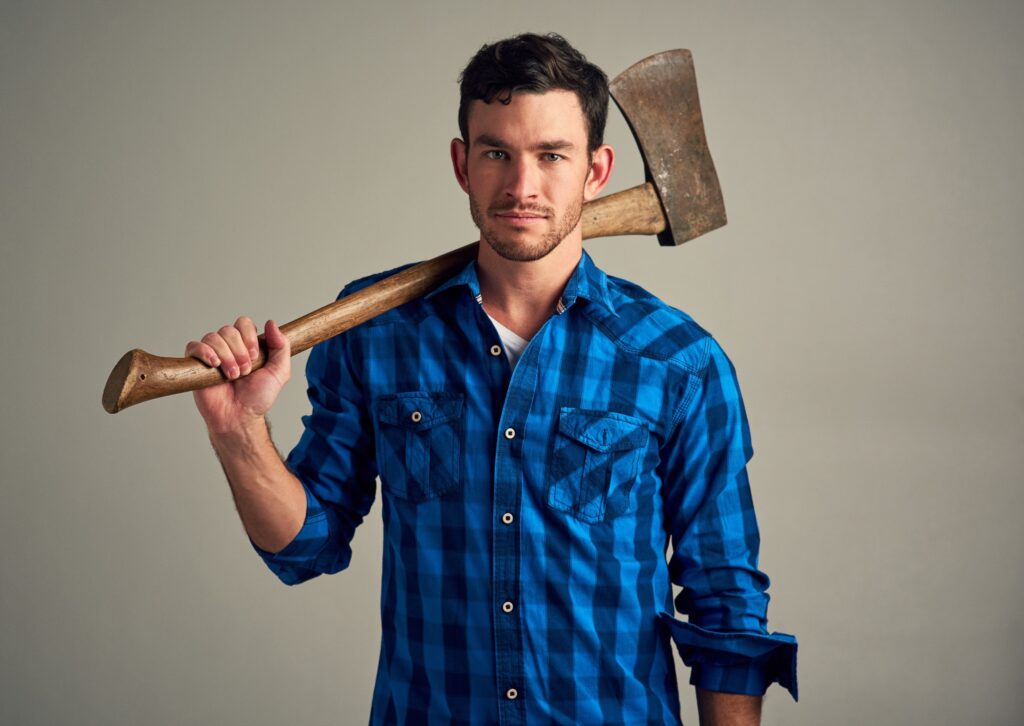Axe-throwing has gained popularity as a unique and thrilling pastime. The throwing distance is a fundamental factor that significantly influences the dynamics and success of an axe-throw is the throwing distance. In this exploration, we delve into the art and science of axe-throwing, unraveling the critical role that throwing distance plays in mastering this skillful and exhilarating pursuit.

Understanding Throwing Distance
Throwing distance refers to the space between the axe-thrower and the target. In axe-throwing, participants typically stand at a designated distance from the target, and the challenge lies in accurately propelling the axe to hit the bullseye or desired scoring area. The distance at which the thrower stands can vary depending on the rules and regulations of the specific axe-throwing venue.
The Dynamics of Axe Flight
The relationship between throwing distance and the flight of the axe is a complex interplay of physics and technique. Let’s explore the key dynamics:
1. Angular Momentum
The angular momentum generated during the throw determines the rotation of the axe in flight. Throwing distance affects the angular momentum, impacting the number of rotations the axe completes before reaching the target.
2. Aerodynamics
Throwing distance influences the interaction between the axe and air resistance. Longer distances expose the axe to more air resistance, affecting its trajectory and potentially causing it to drop or veer off course.
3. Release Velocity
Throwing distance dictates the velocity at which the axe is released. Achieving the right balance between power and precision is crucial for consistent and accurate throws.
Factors Influencing Throwing Distance
The optimal throwing distance is not one-size-fits-all; various factors determine the most suitable distance for an axe-thrower. Consider the following elements:
Skill Level
Novice axe-throwers often start at shorter distances to build foundational skills. Advanced players may challenge themselves with longer distances to refine accuracy and technique.
Axe Weight and Design
The weight and design of the axe influence the ease of handling and the force required for a successful throw. Different axes may perform optimally at specific throwing distances based on their unique characteristics.
Venue Regulations
Axe-throwing venues often have specific regulations regarding throwing distance. Participants must adhere to these guidelines to ensure a standardized and safe experience.
Personal Preference
Some throwers may find a particular distance more comfortable or conducive to their throwing style. Personal preference plays a role in determining the preferred throwing distance for an individual.
Optimizing Throwing Distance for Accuracy
Achieving accuracy in axe-throwing requires a nuanced understanding of how throwing distance impacts the trajectory of the axe. Consider the following tips to optimize throwing distance for accuracy:
Consistent Stance
Maintain a consistent and balanced stance at varying throwing distances. A stable foundation contributes to better control and accuracy.
Target Focus
Adapt your focus and visual alignment based on the throwing distance. Develop a keen sense of distance judgment to adjust your aim effectively.
Rotation Control
Practice controlling the number of rotations based on the throwing distance. Fine-tune your technique to achieve the desired rotational outcome.
Release Timing
Adjust the timing of your release to suit the distance. Experiment with different release points to find the optimal timing for accuracy.
Adaptability
While practicing axe-throwing, make an effort to cultivate adaptability in your throwing style to accommodate different distances. Over time, you can develop the ability to transition between short and long throws seamlessly.
Safety Considerations in Throwing Distance
Ensuring safety is paramount in the practice of axe-throwing, and throwing distance plays a crucial role in maintaining a secure environment. Key safety considerations include:
Venue Guidelines
Strictly adhere to the throwing distance guidelines provided by the axe-throwing venue. Respect and follow all safety rules and regulations.
Crowd Control
Maintain a clear and designated throwing zone to prevent accidental injuries. Implement crowd control measures to safeguard participants and spectators.
Adequate Space
Ensure that there is sufficient space for axe-throwers to move comfortably. Avoid overcrowding to prevent collisions or distractions.
Proper Training
It’s important to receive proper training on axe-throwing techniques and safety procedures. Beginners should be supervised by experienced instructors to mitigate risks.

Mastering the Throw
In the world of axe-throwing, the role of throwing distance emerges as a crucial factor influencing the art and science of this exhilarating sport. From the physics of axe flight to personal skill levels and safety considerations, understanding and mastering throwing distance enriches the experience for enthusiasts and professionals alike.
Check out the Propel Axe blog to learn more about axe-throwing techniques and games!


 720-330-9755
720-330-9755
